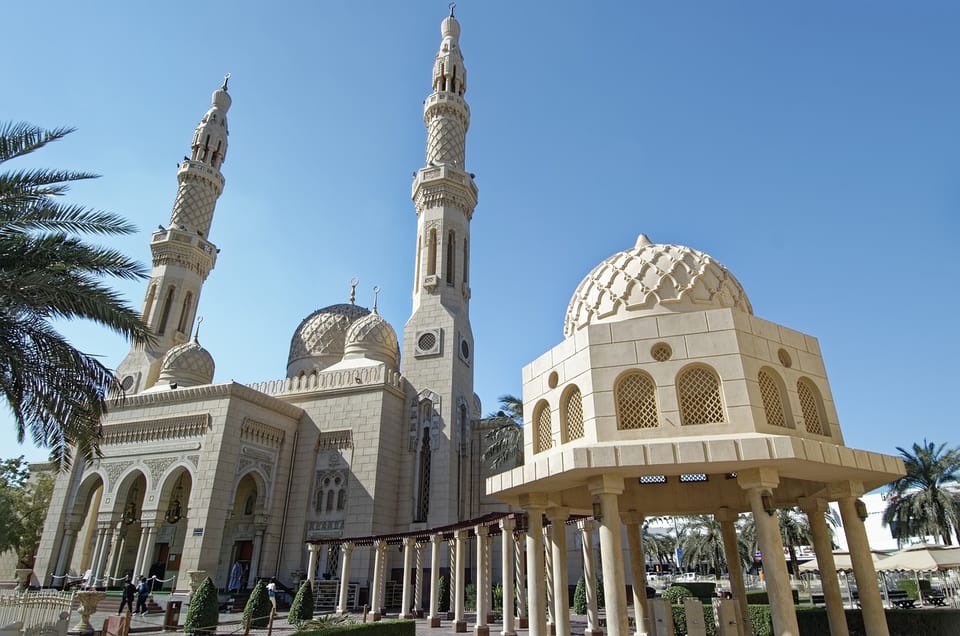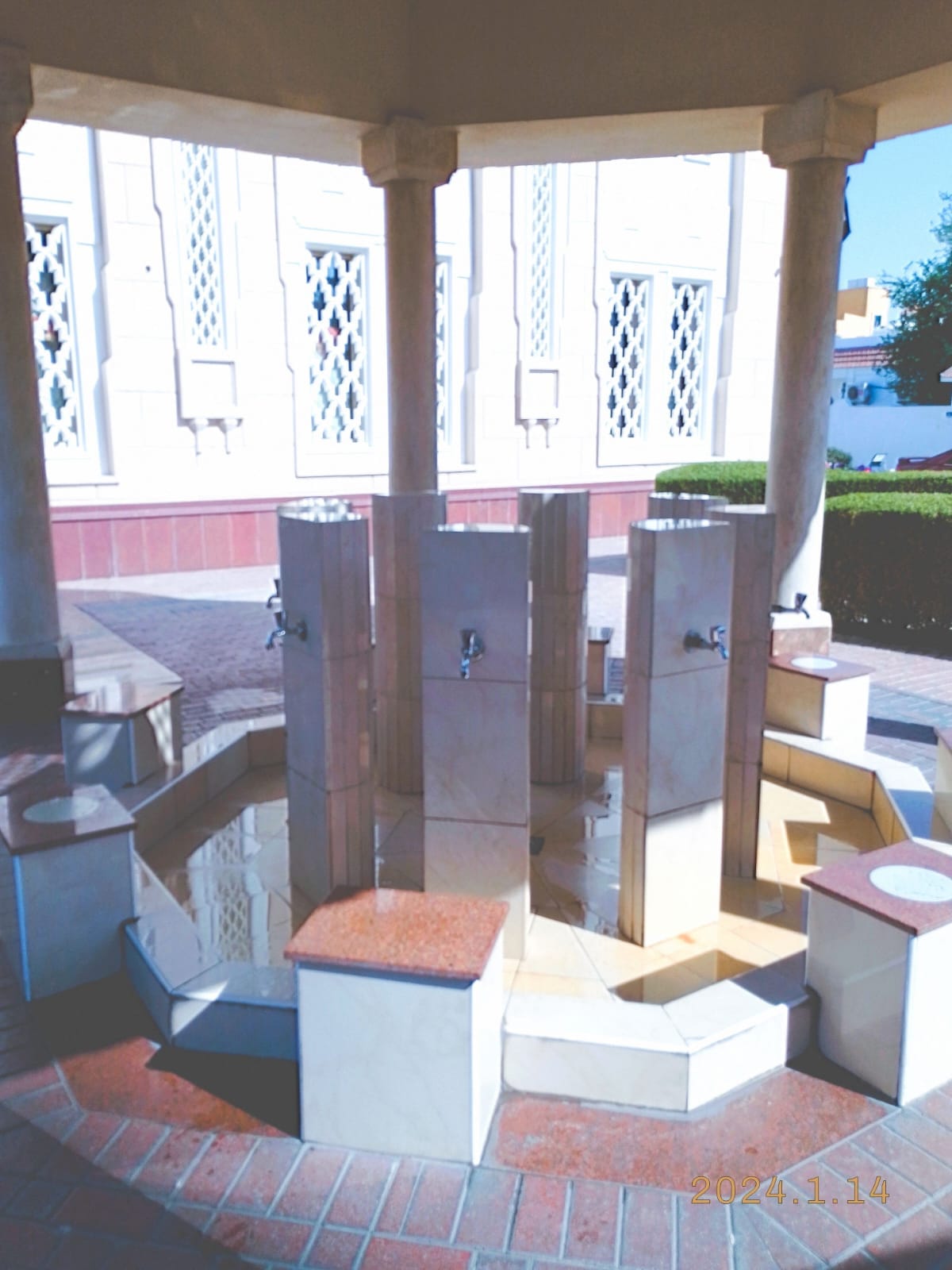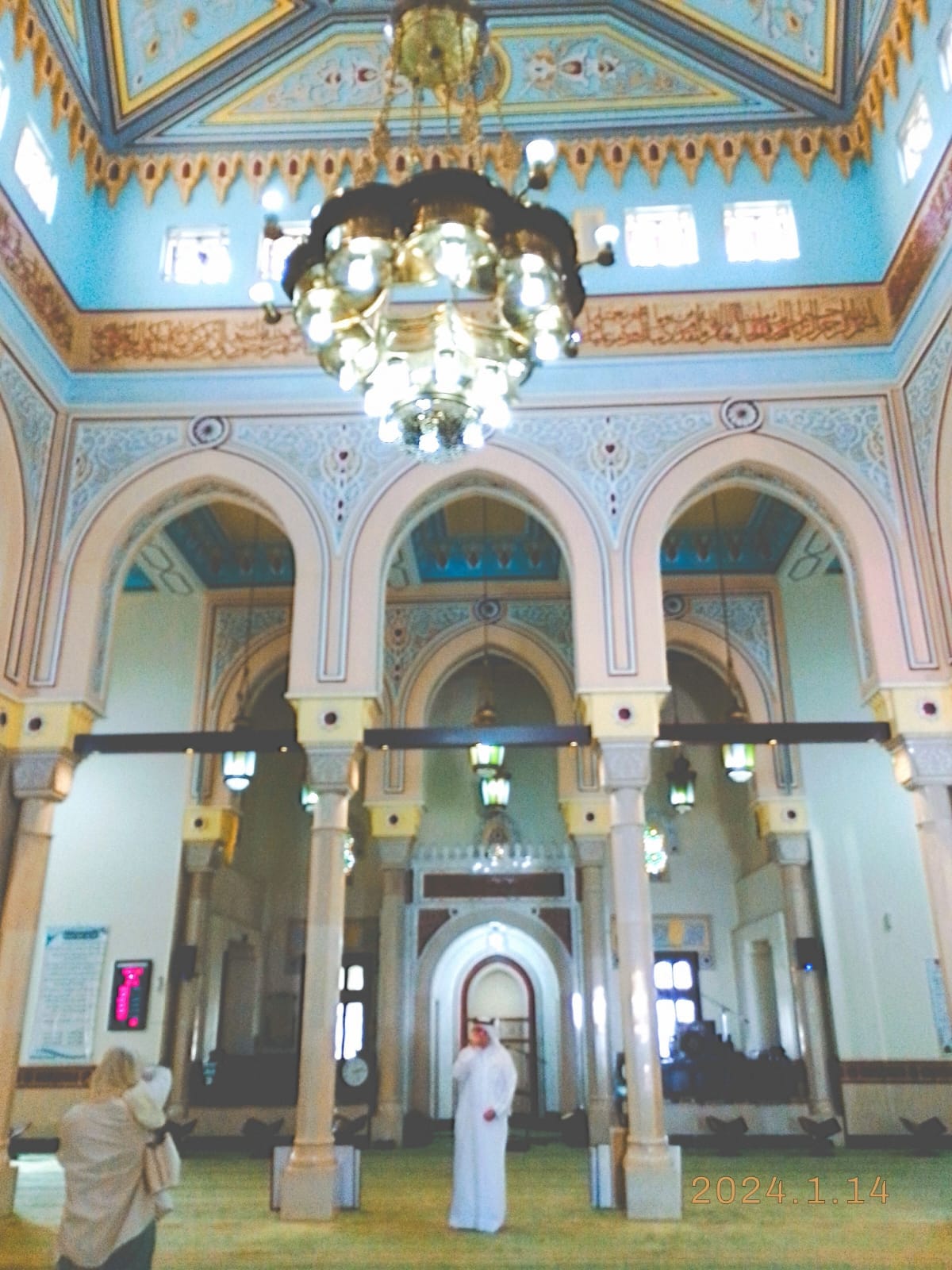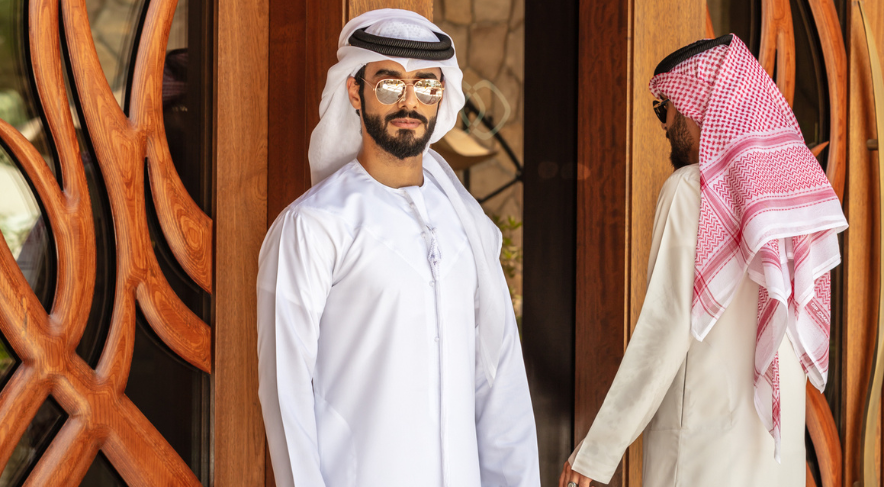Can a Mosque Change Your View of Dubai? My Adventure in Jumeirah Mosque

Hi Friends 👋,
In our last newsletter, we plunged into the pulsating economic core of Dubai. Now, it's time to flip the script and set sail into Dubai's vibrant, leisure-filled, and intriguing side, a veritable treasure chest for the adventurous tourist.
Picture this - a bright Sunday morning in Dubai, an invigorating wave of excitement washing over the fatigue from a red-eye flight. The afternoon and evening stretched out ahead, a golden opportunity to discover Dubai's gems before the storm of work takes over.
Today, I'm thrilled to share one of the most unique and unforgettable slices of that adventure - a 75-minute cultural journey into the heart of the Jumeirah Mosque, a mesmerizing experience that stands out.
The Jumeirah Surprise
Imagine this - I rolled up to the Jumeirah Mosque expecting, well, not much. I mean, it was just another stop on my whirlwind Dubai tour, right? I had my camera ready for a quick snap or two, and then I planned to hightail it out of there to the next spot.
But boy, was I in for a surprise!
After I walked into the Mosque, I found myself standing in front of a notice stand announcing a cultural tour. Without hesitation, I registered for the tour. Our guide, a middle-aged local Arabic gentleman with a friendly smile, kick-started the tour with a taste of local culture; we were welcomed with traditional Arabic coffee and dates.
Rituals Unveiled
What followed was an enlightening demonstration of the ritual purification process Muslims undertake before entering a mosque. I mean, talk about a crash course in cultural immersion, right at the get-go!
When the guide began detailing the "Wudu" or "Ablution" process, I was eager to participate. Raising my hand, I volunteered to follow along with his directions. The crowd around me chuckled as I rolled up my sleeves and prepared to dive into the experience.

As the guide instructed us to wash our hands, mouth, nostrils, arms, head, and feet, I faithfully followed along, much to the amusement of my fellow tourists. When it was time to wash my face, I took a deep breath, closed my eyes, and splashed the water onto my face.
However, my enthusiasm was a little over the top, and I ended up sputtering and coughing as some of the water went down the wrong way!
The area echoed with laughter, and even the guide couldn't help but chuckle. "Watch out for the water!" he joked, and I couldn't help but laugh aloud at my own goofy mistake. It was a lighthearted moment that cut through the solemnity and reminded us all that learning about new cultures can be fun, surprising, and a little bit messy!
Mosque Marvels
As we stepped into the Mosque, our shoes neatly tucked away, our guide began to share enlightening insights about the Islamic faith. He painted a vivid picture of mosques as central places of worship, where Muslims congregate to perform their five daily prayers.

I learned that each mosque is a masterpiece of architectural design, complete with features like the mihrab (a prayer niche) and the minaret (a towering symbol). These aren't just decorative elements but are designed to facilitate and enhance the worship experience. And here's something that intrigued me, the mihrab within the mosque serves as a compass, pointing towards the holy city of Mecca.
Our guide then unraveled the mystery of the five daily prayers. These prayers, observed at dawn, midday, afternoon, sunset, and night, aren't just rituals.
They are a symphony of movements and Quranic recitations, known as salat or salah. The prayers commence with an intention made in the heart of the worshipper, followed by a series of actions - standing, bowing, prostrating, and sitting.
Throughout these postures, phrases like "Allahu Akbar" which means "God is the Greatest", echo through the air, mingling with verses from the Quran.
The role of the Imam, the religious leader who orchestrates this symphony of prayer, was another revelation. The Imam doesn't just lead the prayers, he is the key to optimizing the acoustics of the mosque. His position, coupled with the design of the mihrab, ensures that every member of the congregation can hear and follow the prayer.
And here's a thought that struck me - researchers have discovered that the shape and placement of the mihrab can be engineered to better reflect and focus the Imam's voice towards the worshippers. It's a fascinating blend of spiritual practice and scientific principle.
Secrets of the Kandura
Next up on the agenda was the Q&A session. I had been itching to ask this one question that had been nagging at me for ages. You see, I'd always been fascinated by the long, white robes worn by the local men, known as kanduras. I had my preconceptions, of course - I thought they were purely a religious thing.
But oh, how wrong I was! The kandura, it turned out, was the desert's answer to sunscreen! These flowing robes were designed to shield the body from the harsh desert sun and keep the wearer cool. The white color, apart from looking remarkably chic, was a practical choice to reflect sunlight.

Our guide then dropped a fun fact about the evolution of the kandura. Apparently, yellow was the new white...well, back in the day at least. As Dubai's economy prospered and the cash started rolling in, white became the color of choice for these robes. But it wasn't just about making a fashion statement - wearing white was a clear symbol of status. It said, "Hey, I don't have to toil under the scorching desert sun!" Now, that's what I call a wardrobe power move!
But the sartorial revelations didn't stop there. You know that rope that men wear on their heads, often paired with the kandura? Far from being a fashion accessory, it had a practical use. In the olden days, the rope was used to tie the legs of camels to stop them from wandering off into the sunset! It was a nod to the region's nomadic past and the starring role camels played in desert life.
Open Door, Open Mind
Towards the end of my tour at the Jumeirah Mosque, the guide shared something profound. He explained the underlying purpose of this tour. These cultural journeys into the heart of Dubai's iconic mosque, he said, are tied to the vision of a man whose name is synonymous with Dubai's prosperity - Sheikh Mohammed bin Rashid Al Maktoum, which we also spent sometime in the last episode to talk about.
The Sheikh's vision of fostering Dubai as a global hub echoes in the ethos of "Open Doors, Open Minds". This initiative, part of the Sheikh Mohammed bin Rashid Al Maktoum Centre for Cultural Understanding, welcomes people from around the globe to immerse into Dubai's rich culture. It aims to deepen our understanding of their traditions and way of life, breaking cultural barriers, and dispelling misunderstandings.
This vision left me awestruck. The Sheikh's efforts to use understanding as a tool for unity resonated with me. It's amazing how understanding can dissolve misconceptions. For instance, I thought the white robes in Dubai were religious attire, but they're actually a practical response to the desert sun. The more we learn about cultures, the fewer misconceptions we hold.
Indeed, the tour was more than just sightseeing. It was an opportunity to step into another culture. While I couldn't literally step into their shoes, they did let us wear their "kandura", offering me a unique perspective.
The experience at the Jumeirah Mosque was a reminder that when we open our minds and doors to others, we invite understanding and unity. And as I've learned, sometimes life's most unforgettable lessons come from the most unexpected places.
More than a Mosque
After the enlightening sharing on the "Open Doors, Open Minds" policy from our guide, I was intrigued. I decided to dig a bit deeper and discovered that the Sheikh Mohammed Centre for Cultural Understanding offers even more than just the Jumeirah Mosque tour.
- There's a traditional Emirati Breakfast/Lunch/Dinner program that includes a guided walking tour of the historic Al Fahidi neighbourhood. You'll also be treated to a traditional Emirati meal where you can engage in conversation with local Emirati hosts.
- A "Camel in the City" live talk that provides insights into the history and relationship between camels and Dubai. Who knew camels could be so fascinating?
- A variety of cultural activities at the Visitor Center that aim to promote understanding of Emirati culture and traditions.
- Outreach programs including lectures, workshops, and cultural events to promote cultural exchange and dialogue.
To be honest, I was pleasantly surprised. There's so much more to Dubai beyond the glitzy malls and sky-high buildings. I'd highly recommend you dedicate half a day or even a full day to explore this cultural side of Dubai. Don't just take my word for it though, dive in and experience it for yourself!
And that's it, my friends. My whirlwind Dubai journey comes to a close. But the beauty of travel is that the adventure doesn't end when you say goodbye to a place. It continues to live on in the stories we share and the lessons we take away. So, here's my takeaway from Dubai - keep an open mind, embrace new experiences, and never forget to laugh at yourself!
Interested in learning more? Check out the Sheikh Mohammed Centre for Cultural Understanding (Sheikh Mohammed bin Rashid Al Maktoum Centre for Cultural Understanding – Book a dubai heritage tour today! (cultures.ae)) for further details. And remember, the world is full of surprises. All it takes is a little curiosity and a willingness to step out of your comfort zone. Happy travels!
Best,
Sherman

Member discussion